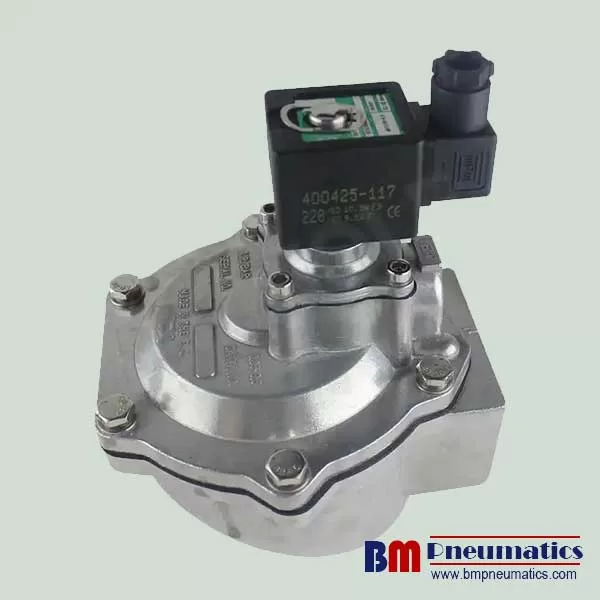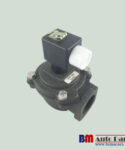Introduction
The ASCO Diaphragm Valve, a precision-engineered fluid control device critical to industries like semiconductor manufacturing, pharmaceuticals, and chemical processing, has long relied on seamless global trade networks. However, former President Donald Trump’s proposed tariff escalations—including a potential 60% levy on Chinese imports and broader trade restrictions—threaten to disrupt this equilibrium. As geopolitical tensions intensify ahead of the 2024 U.S. election, businesses dependent on ASCO valves must reassess their supply chain vulnerabilities. This article examines the implications of Trump’s tariff strategy for manufacturers, exporters, and end-users of ASCO diaphragm valves, offering data-driven insights into emerging risks and adaptive strategies.

1. The ASCO Diaphragm Valve Ecosystem: A Globalized Supply Chain
ASCO valves, manufactured by Emerson Electric Co., are pivotal in applications requiring sterile or corrosive fluid handling. With production hubs in the U.S., Europe, and Asia, their supply chain spans raw material sourcing (e.g., PTFE diaphragms from Germany), assembly in low-cost regions like Mexico, and distribution to high-demand markets such as China’s semiconductor sector.
- Key Data Point: China imported $2.8 billion worth of industrial valves in 2023, with ASCO holding a 12% market share in high-purity applications (Global Trade Atlas).
- Vulnerability: 40% of ASCO’s components are sourced from China-linked suppliers, exposing the supply chain to tariff-driven cost spikes.
2. Trump’s Tariff Blueprint: Direct and Indirect Impacts
Trump’s proposed tariffs—part of a broader “America First 2.0” agenda—target Chinese imports but risk triggering retaliatory measures. For ASCO valves, three scenarios emerge:
A. Import Cost Escalation
- A 60% tariff on Chinese goods would directly affect U.S. manufacturers importing valve components (e.g., stainless-steel actuators, solenoid coils).
- Case Study: A 2023 U.S. Department of Commerce report found that Section 301 tariffs increased diaphragm valve production costs by 18–22% for U.S. OEMs reliant on Chinese subcomponents.
B. Export Market Retaliation
- China may counter with tariffs on U.S.-made ASCO valves, jeopardizing access to its $1.3 billion semiconductor valve market.
- Risk Multiplier: European and Asian competitors like GEMÜ or KITZ could exploit trade tensions to capture market share.
C. Supply Chain Balkanization
- Forced decoupling may accelerate reshoring of valve production to the U.S. or friend-shoring to allied nations like India. However, rebuilding PTFE diaphragm supply chains domestically could take 3–5 years (McKinsey, 2024).
3. Sector-Specific Fallout: Semiconductors, Pharma, and Energy
- Semiconductors: ASCO valves are essential for ultra-pure gas delivery in chip fabs. Tariff-induced delays could exacerbate the global chip shortage, inflating production costs by 8–12% (SEMI, 2024).
- Pharmaceuticals: Bioreactor valve systems face compliance hurdles if U.S.-China trade documentation requirements tighten.
- Energy: LNG plants reliant on ASCO cryogenic valves may encounter project delays due to tariff-driven budget overruns.
4. Adaptive Strategies for Industry Stakeholders
To mitigate tariff risks, businesses should:
- Diversify Sourcing: Partner with suppliers in tariff-exempt regions (e.g., Vietnam, Thailand) for diaphragm subcomponents.
- Leverage Free Trade Agreements (FTAs): Utilize USMCA to shift final assembly to Mexico, avoiding Chinese-origin penalties.
- Stockpile Critical Inventory: Buffer 6–8 months of valve stocks ahead of anticipated 2025 tariff implementation.
- Advocate for Exemptions: Lobby for ASCO valves to be classified under HTS 8481.80 (eligible for tariff exclusions as “essential industrial machinery”).
5. Long-Term Outlook: Resilience Through Innovation
Tariff pressures may accelerate adoption of additive manufacturing (3D-printed valve bodies) and AI-driven predictive maintenance to offset logistics disruptions. Emerson’s recent $200 million investment in Texas-based “smart valve” factories signals a strategic pivot toward tariff-resilient production.
Conclusion
Trump’s tariff policies threaten to fracture the finely tuned supply chains underpinning ASCO diaphragm valve availability, with cascading effects across critical industries. While short-term disruptions are inevitable, proactive firms can turn trade adversity into opportunity by reengineering procurement strategies and embracing technological innovation. Stakeholders must act swiftly to audit vulnerabilities, engage policymakers, and secure alternative pathways in an increasingly fragmented global trade landscape.

